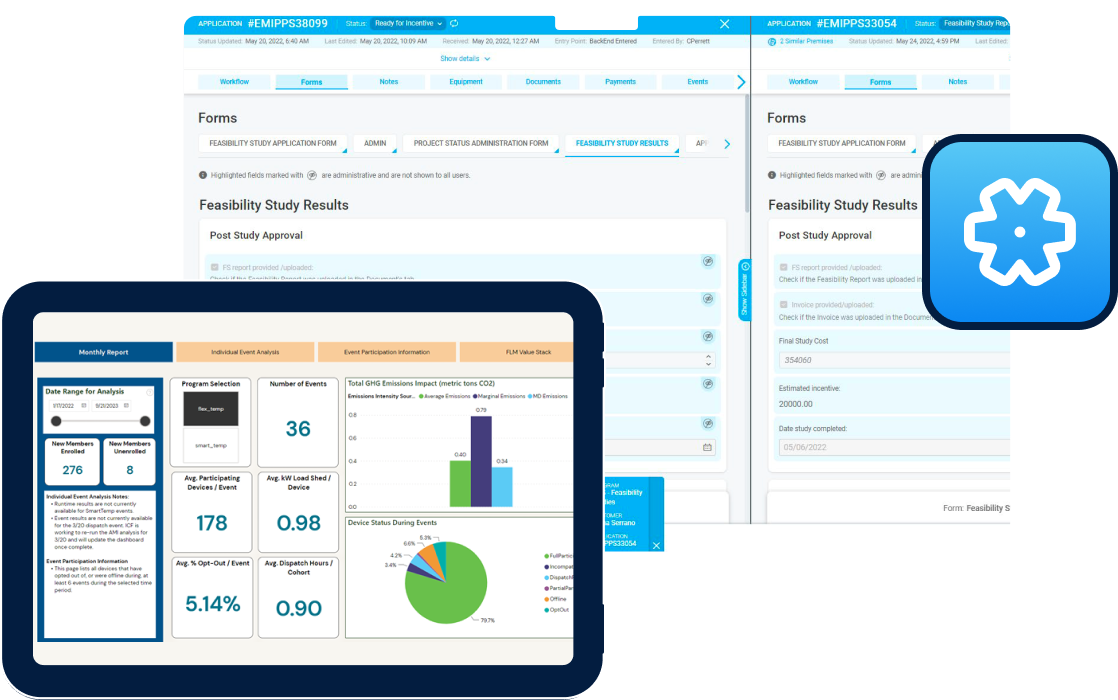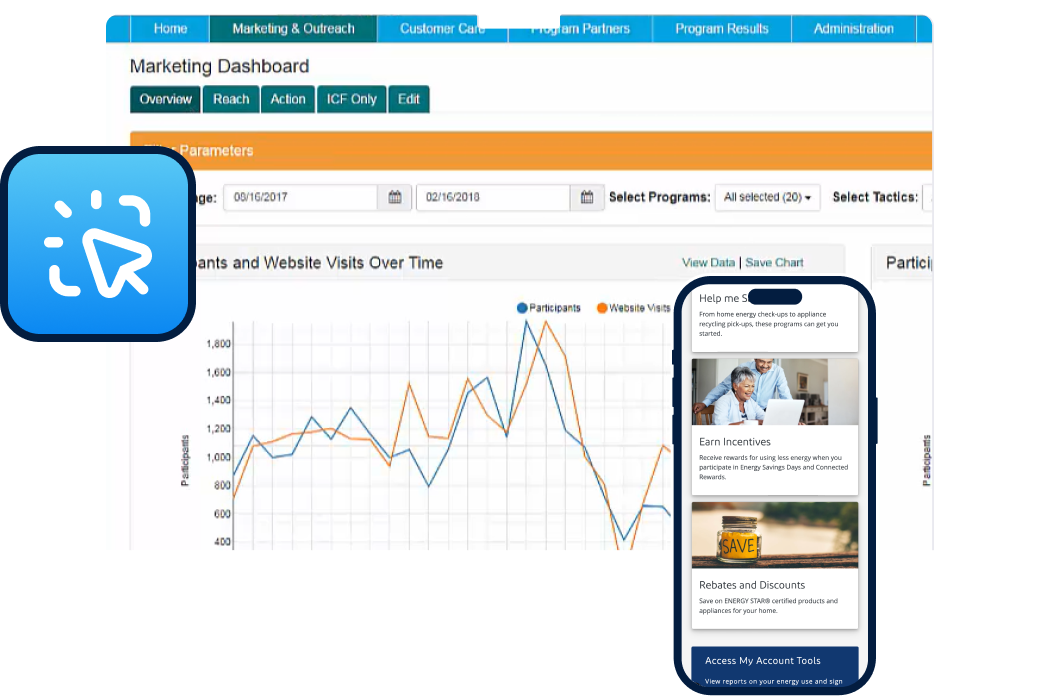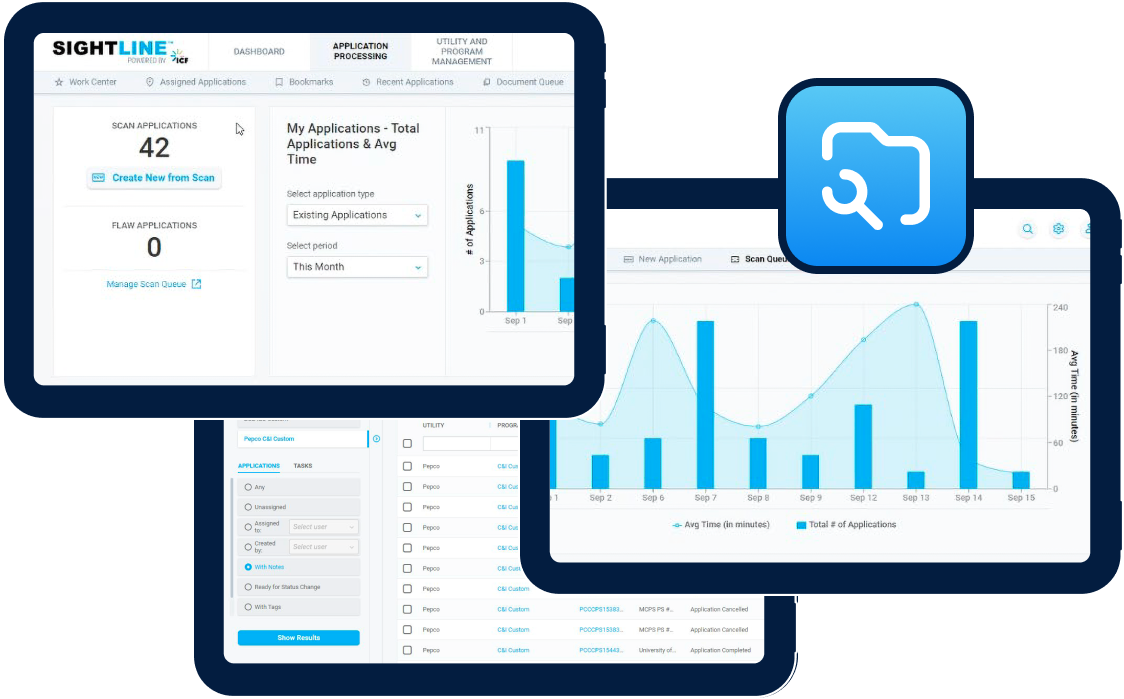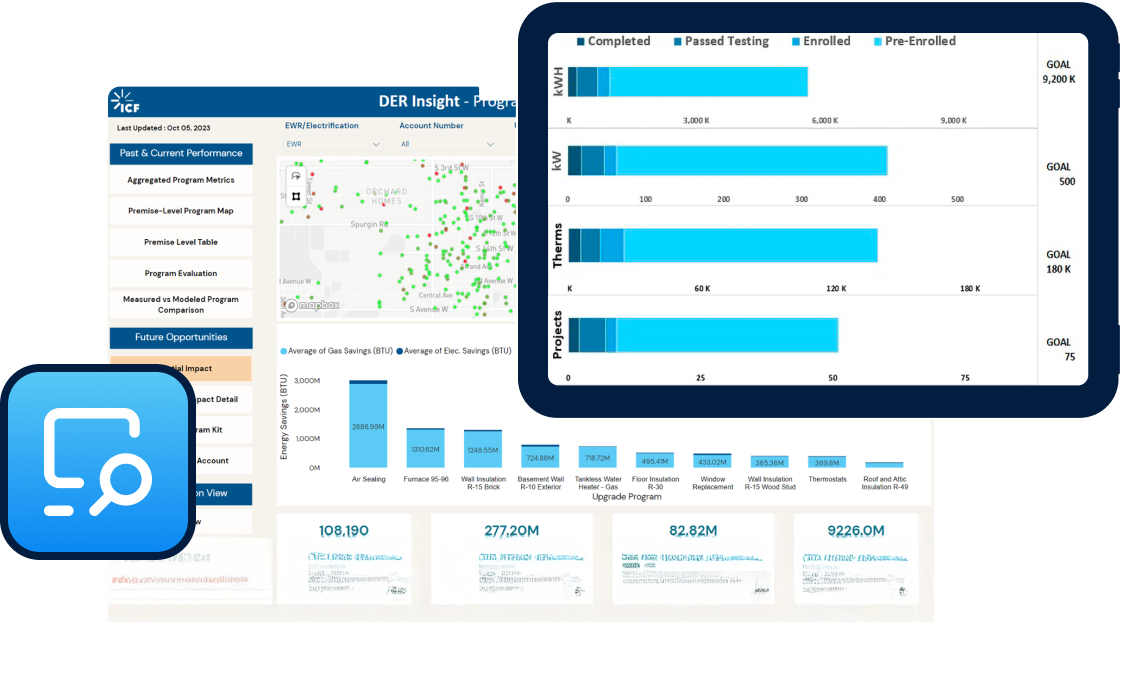
Smarter utility programs. Responsibly powered by AI.

Sharper programs, faster results
Sightline empowers you to find the right customers on the grid, implement programs with speed and precision, and continuously evaluate program performance.
Secure technology. Even bigger impact.
The upgraded Sightline platform pairs enterprise-grade security and near real-time business intelligence to enable faster customer program design and management.

Design with confidence
Craft cost-effective programs with confidence. Predictive analytics help you design new programs for targeted customers or fine-tune existing ones.
Engage faster
Connect with the right customers, faster. Tailored marketing campaigns drive conversions through personalized outreach and digital experiences.
Implement smarter
Streamline operations and program delivery. AI and automation enhance customer engagement—helping you to deliver results with speed and accuracy.
Evaluate real impact
Optimize program performance. Built-in analytics and AI tools immediately reveal what’s working and where to improve, so you can get smarter with every program cycle.
Built on trust and backed by deep industry expertise
Sightline’s award-winning platform combines 40+ years of utility expertise with transparent technology—giving teams near real-time visibility into customer data, program performance, and results.

90+
1.4K+
32M+
930M+
Your AI-powered platform, tailored for every team
See how Sightline equips customer-facing teams with modular tools designed to optimize every stage of your utility customer program.

Designed to optimize and perform at every stage
Smarter technology. Faster execution. Bigger savings. Discover key features of Sightline that make your customer programs more effective.
Program management & operations
Streamline your programs with automated workflows, real-time incentives, seamless contractor integration, and built-in compliance.
- End-to-end workflow automation
- Multi-point incentive and rebate processing
- Contractor and trade ally integration
- Compliance tracking and field verification
Customer engagement
Go beyond basic segmentation with precision targeting that optimizes programs and delivers greater impact.
- Mobile-first applications and instant savings tools
- Customer education and branded digital experiences
Partner enablement & support
Find fast, flexible tools for seamless field solutions and supply chain coordination.
- Digital portals, toolkits, and marketing support
- Near real-time tracking and application status
Analytics, insights & reporting
Get an intelligent analytics platform that centralizes customer data and ensures compliance with industry standards.
- Pre-built and configurable dashboards and performance forecasting
- Contractor scorecards and program benchmarking
- Proven integration layer supporting today's customer, meter, and other industry systems
Enhance your customer programs today
Request a demo or connect with an energy expert to learn how Sightline can work for you.
Related industries, services, and solutions



